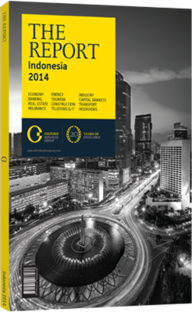A vital role: The equipment market is expanding along with the economy
With a number of infrastructure projects being rolled out in the coming years, alongside overall real estate expansion and economic growth, the construction equipment sector has a vital role to play in Indonesia’s future development. Indeed, the value of the construction equipment market doubled between 2008 and 2013 – with Research and Markets analysts recently predicting a compound annual growth rate of 10% for the 2013-18 period. The market is one in which foreign firms, particularly those from Japan, have a major presence via local joint ventures and subsidiaries. These are benefitting from increased government investment in transport and energy infrastructure in particular, coupled with rising demand for all kinds of real estate.
Market Structure
While the supply of construction equipment in Indonesia is concentrated in a handful of globally linked suppliers, on the demand side, the contractors’ market is a highly fragmented one. The most recently available figures, for 2011, show 182,200 contractors known to the National Construction Services Development Board (NCSDB) – up from 112,000 in 2008. These have been increasing in size, with the number classified as ‘large’ rising from 695 to 1742 over the same period. There are also an increasing number of foreign contractors in the market, up from 79 to 130, according to the NCSDB figures. Four major contractors are Adhi Karya (Persero), Wijaya Karya, Pembangunan Perumahan (PP) – all majority state-owned – and Total Bangun Persada, a private outfit. The first two of these are the largest, with a roughly 7% share each. All four have operations across Indonesia, although most construction activity focuses on Java. Four companies account for 96% of production volume when it comes to the heavy equipment industry.
According to a 2014 report from the Construction Intelligence Centre (CIC), Komatsu Indonesia, a joint venture between Japan’s Komatsu and United Tractors, is the largest, with a 43% market share in 2012. Caterpillar Indonesia, a joint venture between Caterpillar of the US and Tiara Marga Trakindo, and Hitachi Construction Machinery Indonesia – a subsidiary of Japan’s Hitachi – vie for second and third places. The former had a 19% market share in 2012, according to the report; the latter, 21%. The fourth company is Daya Kobelco Construction Machinery Indonesia, a subsidiary of Japan’s Kobelco Construction Machinery, with 13% of the market in 2012. According to the CIC figures, the building construction equipment market was worth some $142.61m in 2008, rising to $272.49m in 2013.
The report predicted a value of $424.11m by 2017. The largest part of this has long been made up of crane and lifting equipment, with mobile cranes the most popular variety, accounting for $185.14m of the 2013 total.
Earthmoving and tunnelling equipment, meanwhile, had a market value of $1.71bn in 2008, increasing to $2.55bn in 2013, with a predicted $3.71bn by 2017.
Earthmoving equipment accounted for most of this, with excavators at $848.51m in 2013, bulldozers at $625.6m.
Road construction equipment added a further $159.8m in 2013, mostly road and paving equipment, and building material machinery $245.88m, with concrete and cement equipment the largest part of this.
Challenges
Bringing the supply and demand side together, when it comes to the many smaller outfits, has long been a conundrum, given the high cost of machinery and the low financial capacity and tight margins of many contractors. This has been increasingly resolved, however, via growth in leasing. This has led in turn to rising efficiency and productivity in the sector, with vendors offering rentals on an increasingly wide range of equipment.
Costs, however, do remain an issue for many. Equipment prices are influenced by exchange rate risk too, given the number of imported parts and the costs of other inputs, such as energy. These in turn get passed on to vendors and then to contractors in rentals, further squeezing tight margins in such a competitive business. One expectation is that the sector could see some consolidation, at the demand end, in the years ahead, particularly if economic growth continues to slow.
You have reached the limit of premium articles you can view for free.
Choose from the options below to purchase print or digital editions of our Reports. You can also purchase a website subscription giving you unlimited access to all of our Reports online for 12 months.
If you have already purchased this Report or have a website subscription, please login to continue.

